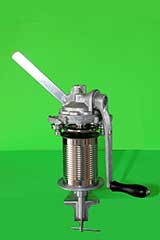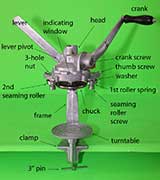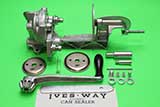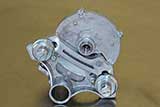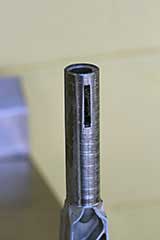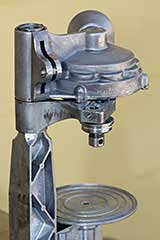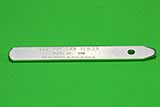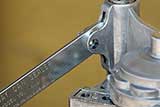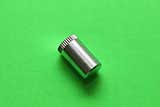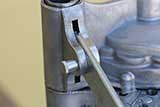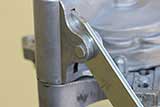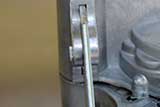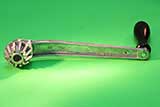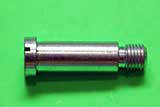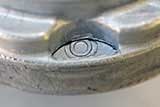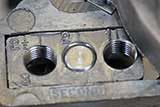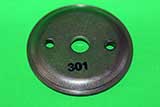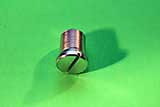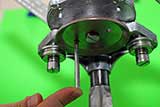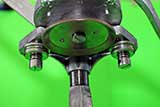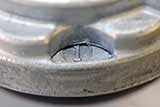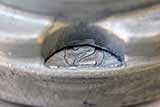Meats and Sausages
Assembling Ives-Way Can Sealer
Setting Up and Operation
The sealer comes with a few seaming chucks and the detached crank and lever. Assembling instructions:
- Locking lever
- Crank
- Chuck
- Adjust seaming rollers
- Turntable and spacers
- Lubrication
- Inspecting closed cans and testing for leaks
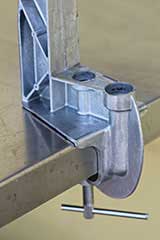
Clamp the sealer to a table or any suitable surface using the pin to tighten the clamp screw. The clamp is the lower part of the frame. Do not overtighten this screw or use an extension on the end of the pin to gain more leverage. A moderate amount of force on the pin furnished is sufficient to secure the sealer to the table.
The sealer comes with the head and rollers attached to the frame post. The head can be easily slid off the post, what some people do for curiosity. Remember to drop the head back on the post of the frame, before installing the locking lever, otherwise the the sealer will not operate properly.
The hand lever is used for raising and lowering the head and should be inserted into the slot.
Check the alignment of the holes in the lever and the head and insert the lever pivot from the back, with the knurled side of the pivot out. Tap the pivot in all the way with a hammer, moving the lever slightly, if necessary, to align the holes.
The lever projects through the head into the frame post.
Crank
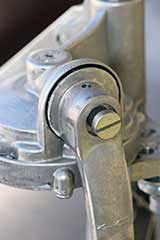
Tighten the screw.
Insert the gear end of the crank into the housing so that it hangs down and a few inches forward. While holding the crank in this position, insert the crank screw and finger tighten. Turn the crank handle until the "0" appears in the center of the indicating window. Loosen the crank screw and readjust the crank handle so it hangs down. Tighten the crank screw with a quarter coin.
Chuck Installation
The chuck is secured to the head with a screw. Rotate the crank until the "0" appears in the indicating window. Insert screw in the center hole of the chuck, from the hollow side and screw into place by hand. Make sure the thumbscrew and 3-hole square nut are backed off, otherwise the chuck might hang up on rollers.
The 3-hole square nut will be adjusted in the step that follows. Put the 3-inch pin through one of the holes and urge the crank clockwise until tight. Turn the crank clockwise until the 3-inch pin is pressed against the frame.
Chuck Removal
Each size can requires a corresponding size chuck. Use the same instructions for removing the chuck except turn the crank counterclockwise. Place the pin through one of the two holes in the chuck, to keep it from turning, and urge the crank counterclockwise until chuck is loose. Then turn the crank until the "0" is in the window and unscrew the chuck by hand. After unscrewing, hold chuck in hand and strike the threaded end of the chuck screw with the flat side of the hammer. This will pop out the screw out of the chuck.
Before using the sealer, oil all points.
Adjusting for Various Can Sizes
Operation
When the can is ready for sealing. hold it in your right hand and center a cover on top of the can. Raise the lever with the left hand and center the can on the turntable. Lower lever slowly and move can sideways, if necessary, to center chuck on the cover. Press lever down to locked position, be prepared to apply some force. Turn crank clockwise and note first and second operations taking place automatically as "1" and "2" appear in the window respectively.
The crank should turn rather hard toward the end of each operation so that the seam will be rolled "tight." Continue turning until "0" reappears in window. The can is then tightly sealed. Lift lever to remove sealed can. The rollers may loosen on account of newness. On new sealers be sure to check both rollers and adjust, if necessary, during sealing of first two dozen cans.
- Ives-Way Products, Inc.
- PO Box 70
- Round Lake Beach, Illinois 60073
- Phone: (847) 740-0658

